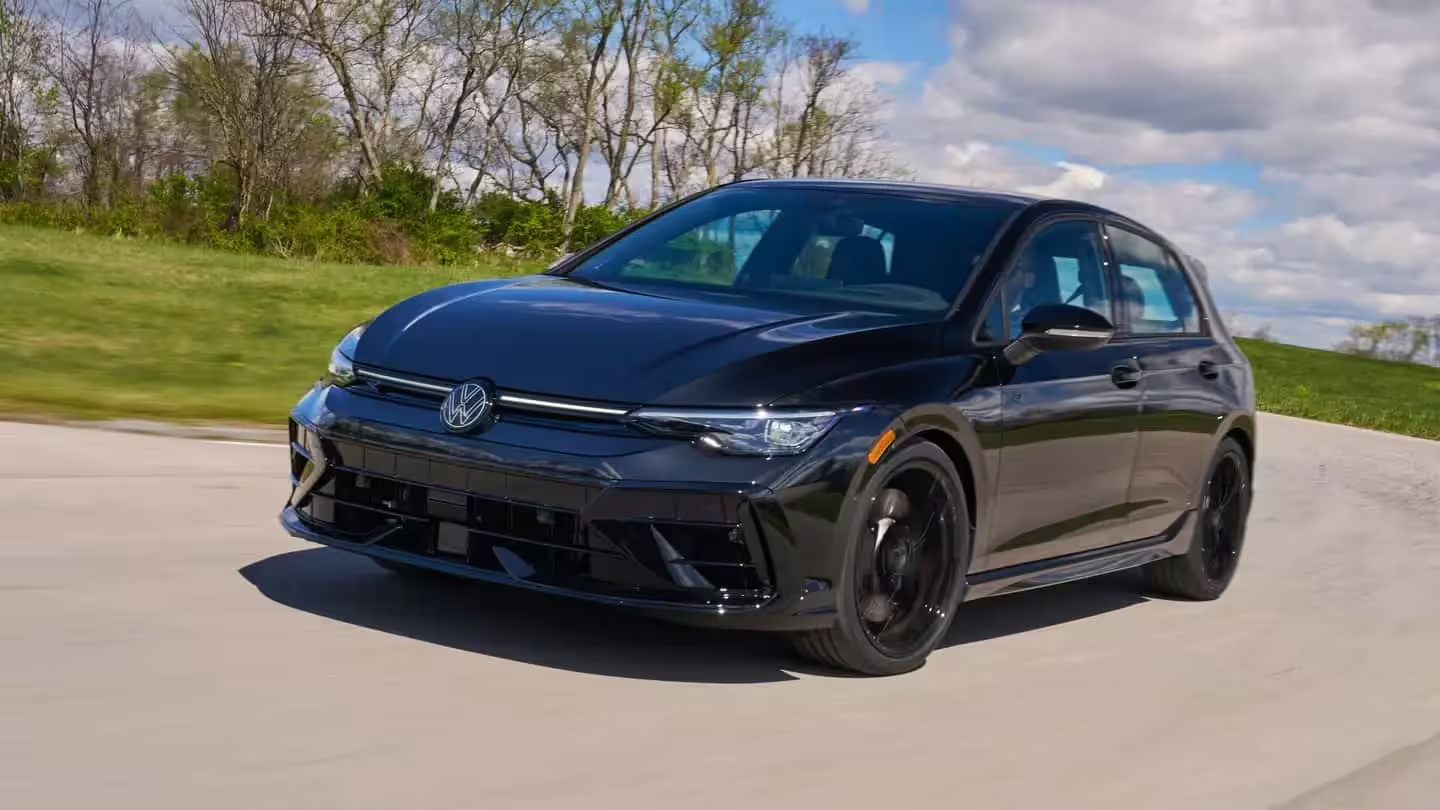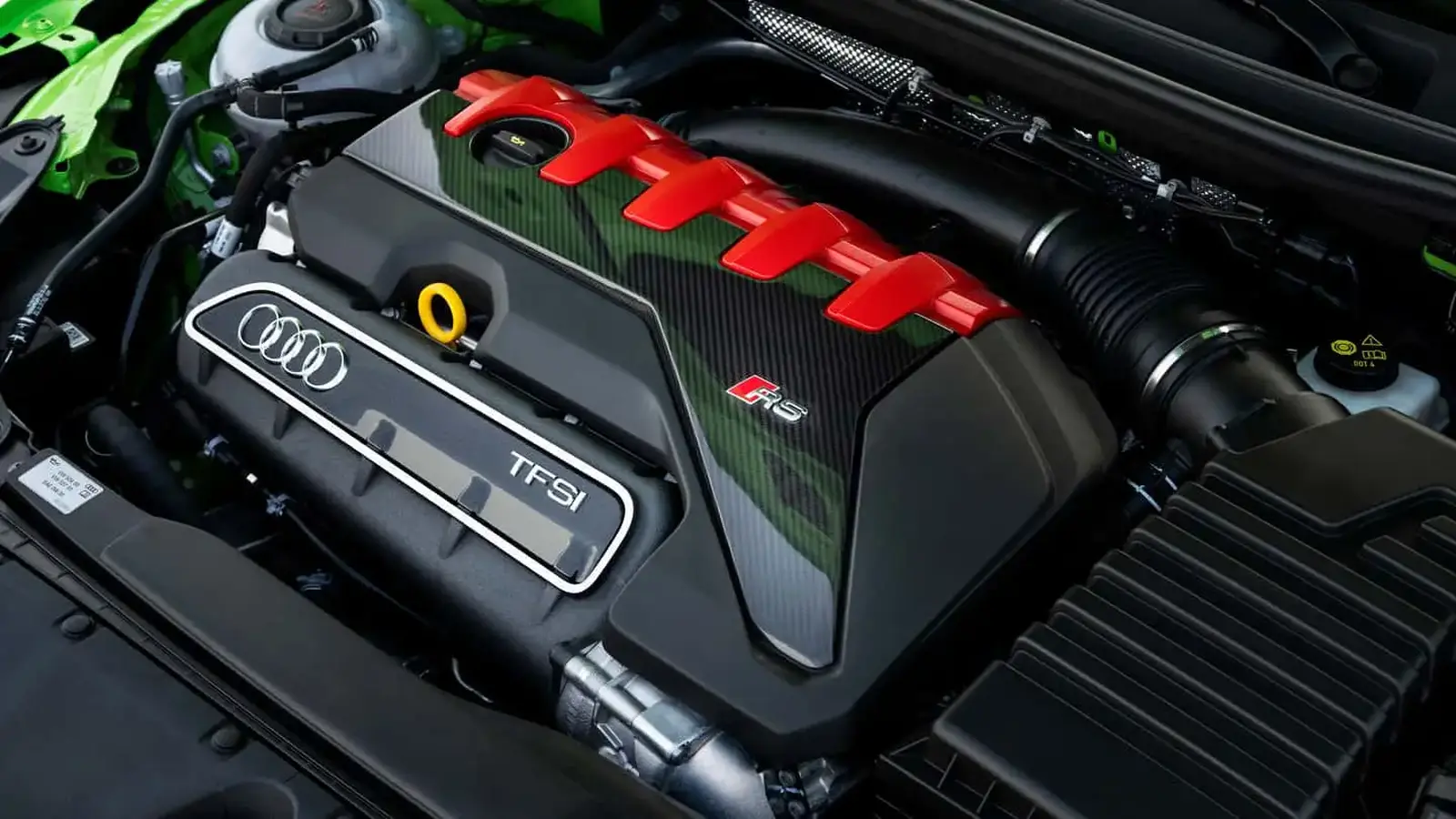5 Minutes
A Five-Cylinder Return for the Golf R
The Volkswagen Group could be preparing to give its flagship hot hatch a dramatic sendoff: an Audi-sourced 2.5 TFSI inline-five. According to a fresh Autocar report, Volkswagen may install the Audi RS3's turbocharged five-cylinder in a limited, range-topping Golf R to mark the 25th anniversary of the R sub-brand in 2027. If true, this would create the most powerful production Golf in the car's history and deliver a true performance halo model for the combustion era.
Background and Development
Talk of fitting an extra cylinder under the Golf bonnet isn't new. Rumors stretching back to 2020 suggested Volkswagen wanted to package the EA855 five-cylinder in a Golf, but Ingolstadt initially resisted sharing the unit. Since then the dynamics inside the VW Group have shifted: Cupra already offers the Formentor VZ5 with the Audi 2.5 TFSI producing close to 400 hp, and independent tuners such as Donkervoort have pushed upgraded variants of the engine toward the 500 hp mark.
Spy photos from Motor1 Germany show a more aggressive-looking Golf R prototype alongside an Audi RS3 testing at the Nürburgring — possible signs engineers are validating a beefed-up five-pot for Wolfsburg's hot hatch. Audi Sport's Sebastian Grams has previously hinted that more output could be extracted from the motor without relying on hybridization.

Vehicle Specifications
Engine and Drivetrain
Projected engine: Audi 2.5 TFSI inline-five. Expected output: likely in the high 300s to low 400s hp range, positioning it above the current EA888 2.0 T of the regular Golf R. Transmission is expected to be a revised seven-speed DSG; the manual has already been discontinued following the recent Golf R facelift.
Weight and Chassis
Autocar reports the swap from the 2.0 to the 2.5 would add roughly 25 kg (55 lb), despite larger brakes and necessary chassis reinforcements. VW may also adopt the mechanical torque-vectoring rear differential — the same torque splitter used on the RS3 — to sharpen handling and improve lap times.
Design and Packaging
Exterior changes would likely be evolutionary but purposeful: wider arches to house larger brakes, revised bumpers for improved cooling, and unique visual cues to distinguish this as a limited top-spec Golf R. Inside, expect performance-focused touches such as sport seats, special badging for the 25th anniversary, and possibly unique trim options that emphasize the model's halo status.
Performance Targets and Nürburgring Ambitions
Fitted with the five-cylinder and a torque-vectoring rear end, this Golf R could challenge for Volkswagen's fastest production lap at the Nürburgring. The current benchmark for the brand's production cars is held by the Golf GTI Edition 50 with a 7:46.13 lap. With enhanced power, torque, and improved rear-end dynamics, the five-cylinder Golf R would be well positioned to assault that record.
Market Positioning and Pricing
Expect premium pricing. The Golf R333, still powered by the EA888 2.0-liter, was listed in Germany at around €76,410, and a standard Golf R starts from roughly €55,540. In the U.S., a regular Golf R begins at about $48,325 before options, making the five-cylinder variant a niche, high-cost alternative. Buyers who prefer a hatchback over the RS3 sedan — particularly in markets such as the U.S., where the RS3 is not available as a hatch — could find the five-cylinder Golf R especially appealing.
Comparisons and Competition
Compared with the Audi RS3, a five-cylinder Golf R would offer a hatchback body style with similar power potential. Against tuned and specialty offerings like the Donkervoort F22, which uses an extensively upgraded 2.5 unit near 500 hp, VW's likely output will be more conservative, balancing durability and emissions compliance with performance. The Golf R would then stand as the ultimate combustion-era Golf before the Mk9 transitions to an all-electric lineup.
Final Thoughts: A Fitting Sendoff for the Inline-Five?
After the inline-five's departure from the TT RS and RS Q3, slotting the 2.5 TFSI into a production Golf R would be a celebrated way to honor an engine family the VW Group has employed since the late 1970s. With EU regulations pushing toward electrification and the Mk9 confirmed as a purely electric Golf, this could be the last, loudest chapter for VW's combustion performance models — and for the beloved five-cylinder itself.
Source: motor1


Leave a Comment